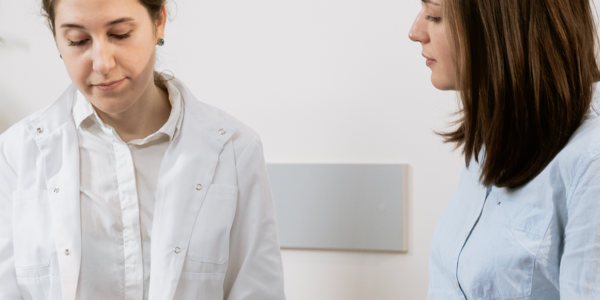When patients walk into your office, you want them to feel immediately at-ease. That’s why you have comfortable seating, friendly front desk staff, and magazines to pass the time. You may not realize this, but you are already taking some of the first steps to engaging in patient-centered care.
As you can imagine, patients want to have a personal relationship with their providers. This includes having an open line of empathetic communication with their medical practitioner. Although this is easier said than done, it is vitally important nonetheless.
A study published by the Journal of the American Board of Family Medicine reviewed patient outcomes when providers practiced person centered care. They found that practices using patient-centered care are linked to better patient outcomes, undergo fewer costly and time-consuming tests, and have lower medical bills.
Prioritizing patient centered care must be at the forefront of medicine. Take the first step to making this possible at your practice by learning more about what patient centered care really is.
Defining patient centered care
In essence, patient centered care is all about attending to patients (and their families) in the ways that they prefer. Often, this means that caring for a patient must include a personable and meaningful interaction along with providing valuable medical care.
The National Academy of Medicine defines patient care as the following: “Providing care that is respectful of, and responsive to, individual patient preferences, needs and values, and ensuring that patient values guide all clinical decisions.” Patient centered care empowers patients to actively participate in their own care.
Let’s take a deeper look at patient centered care and how it can manifest in your practice:
The 4 key aspects of patient centered care
Care is accessible
Fundamentally, patient centered care is about making sure that the right care is provided at the right time and in the right place. Much like how people would rate a restaurant, they tend to base their patient experience on factors like comfort, friendly staff, and timeliness.
It can be undoubtedly difficult to accommodate patient schedules and preferences. Inconsistent or non-traditional work hours can complicate accommodating patient appointment requests. But try putting yourself in the shoes of those patients. Maybe they don’t have PTO and they cannot afford to take unpaid time off for an appointment. Imagine how happy they would be to hear that you are offering evening or weekend hours. Even more, imagine their reaction if they find out that they can conduct their appointment via a telehealth visit. Now they manage their medical needs from wherever is most convenient for them.
This is just one example of making care accessible to all people. It is much easier said than done, but working towards the goal of person centered care will make all the difference for those you treat.
Respect for patient and family preferences
Interacting with a variety of personalities and values comes with being a healthcare professional. These may be influenced by cultural traditions, socioeconomic status, education level, and various other factors. One way to show that you care about your patients is to respect and carry out these preferences.
To keep yourself on track, remember that patients and family members are a valuable part of the care team. In many cases, the presence of family members in a care setting can be encouraged. Part of respecting familial preferences requires allowing family members to help the patient make the right decision for them.
Coordination of care
Ideally, patients would like to take care of all of their medical needs in one place, during one visit. Although this is not always possible, being able to coordinate care at your practice will make all the difference in the patient experience and likely improve patient satisfaction at your office.
Take, for example, a patient who needs a routine blood panel as well as a check-up on a healing injury. It would be incredibly convenient for that patient to be able to have both of those needs met in one visit. Although this may not be the easiest appointment to coordinate or bill for, the satisfaction of this patient will do wonders for your practice. You may gain new patients through word of mouth or positive online reviews, all thanks to this type of patient centered approach.
Focus on physical and emotional well-being
The term “annual physical” is a little bit misleading. Yes, during these appointments things like vital signs are measured and noted. However, what is often overlooked during these appointments is the socioemotional screening. If you are looking to implement patient centered care at your practice, then preventative care appointments need to attend to both the physical and emotional aspects of wellness.
How can technology facilitate patient centered care?
Above all, patient centered care means putting the patient and their needs first. This is generally an intuitive concept for most providers. The difficulty lies in having the time and healthcare provider capacity to carry out this level of patient care. This is where technology can become a huge asset to you as a clinician.
Using patient segmentation (something offered with tools like OhMD through the form of patient tagging) to keep track of things like chronic illnesses, patient preferences, active medications, and availability, is one way to show your patients that you care . Contacting patients in their preferred manner (text, phone call, video visit, email, etc.) is another. Not only are these solutions more convenient for you, but they are also overwhelmingly preferred by patients. There are many ways to put patients at the forefront of your practice, and technology like that offered by OhMD can help.
Ease communication between patients and your care team. Learn more about the OhMD patient communication platform!





